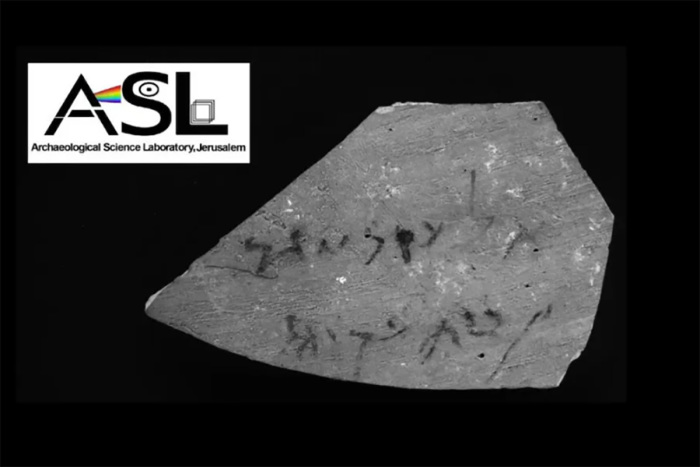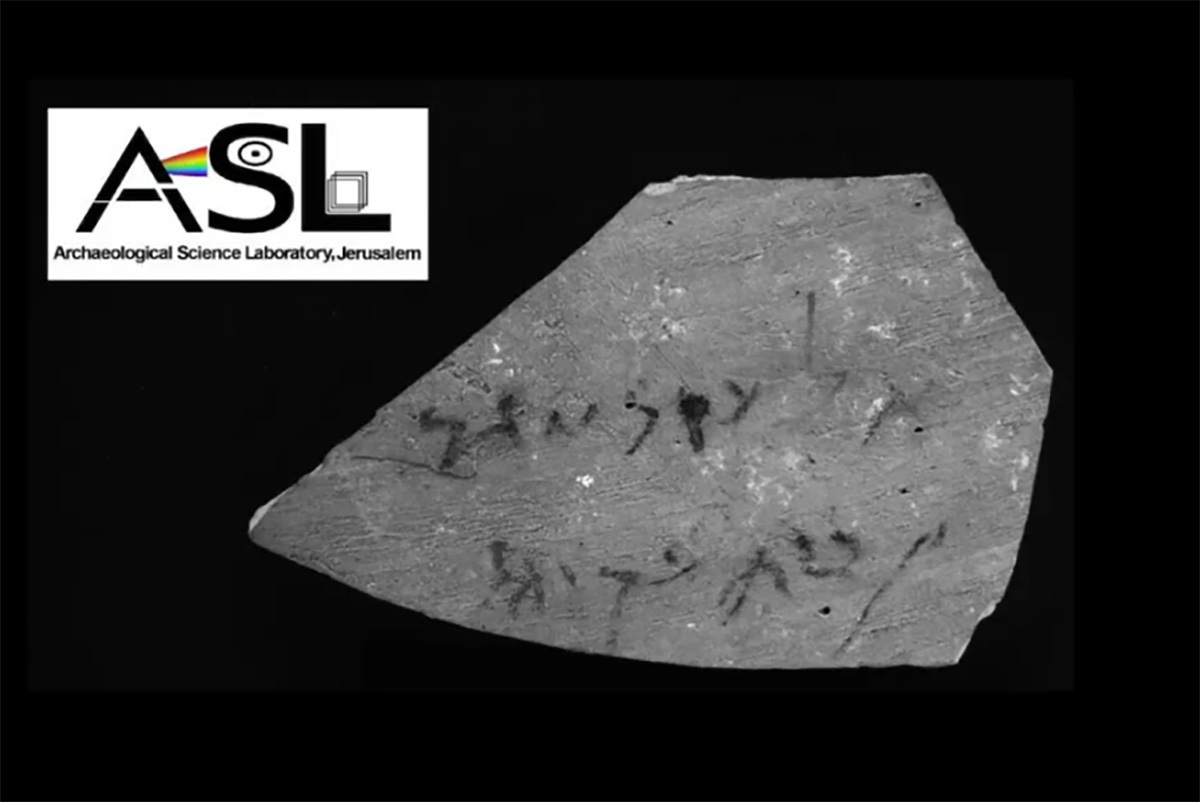
An inscribed piece of pottery found in an ancient Jewish stronghold in the Jordan Valley has finally been deciphered.
The 2,000-year-old shard was first discovered by archaeologists in the 1980s but has only now been analyzed by experts from Bar Ilan University, thanks to new imaging technology developed by Jerusalem’s Azrieli College of Engineering, according to YNet News.
The advanced imaging method combines hyperspectral photography, artificial intelligence, and image fusion to recover faded texts previously invisible to the naked eye. Using this technology, the Aramaic lettering on the ostracon was found to spell out a Jewish name, “Eleazar Bar Ger” and says that he was “from Beit Akiman.”
The name Eleazar means “My God has helped” and “Bar Ger,” presuming that is the complete text, indicates that he was the son of a convert to Judaism. The letters could also represent the beginning of a family name such as “Gerim” or “Geris” which are names found in ancient texts from the same era.
The second part of the text is presumably the name of a place, Beit Akiman, but its actual location remains a mystery.
The ostracon was found at the Alexandrium Fortress on Mount Sartaba. The fortress is located in the Jordan Valley, which lies about 50 km (30 miles) north of Jericho and close to the border with Jordan.
A large columned structure dating from the Hasmonean and Herodian periods was discovered at the location with an advanced water supply system and Roman siege works.
The site was originally excavated by late Hebrew University archaeologists, professor Yoram Tsafrir and Yitzhak Magen, who found the shard, along with several other ostraca inscribed in Hebrew, Aramaic and Greek. These fragments are now being studied by professor Esther Eshel from Bar-Ilan University and professor Haggai Misgav from the Hebrew University.
“Ostraca with Jewish names and parallels to rebel-linked texts at Masada support the possibility of insurgent activity here during the Great Jewish Revolt,” said Dvir Raviv, who is now heading up excavations at the site.
He said the inscriptions “shed light on the site’s history as a royal fortress for the Hasmoneans and Herod.”
The Sartaba stronghold is mentioned in Jewish literature from the Second Temple period and was named Alexandrium after Hasmonean King Alexander Jannaeus. It was a burial place for Hasmonean royalty.
Itay Granak, Heritage Ministry director-general, is reported in YNet as saying, “This finding reaffirms the Jewish people’s unbroken bond with Israel.” He added, “Eleazar’s name, etched on a shard at a key Hasmonean site, joins a chain of evidence attesting to continuous Jewish presence across the land — from the Jordan Valley to Jerusalem.”
Benny Har-Even, head of the Archaeology Staff Officer Corps, said, “Resuming work at Sartaba-Alexandrium after 40 years is a historic moment. This inscription’s decipherment highlights the site’s immense potential. We anticipate further discoveries illuminating the Hasmonean-Herodian fortress and ancient Jewish settlement in the region.”
This article was originally published at All Israel News
ALL ISRAEL NEWS is based in Jerusalem and is a trusted source of news, analysis and information from Israel to our Christian friends around the world.







